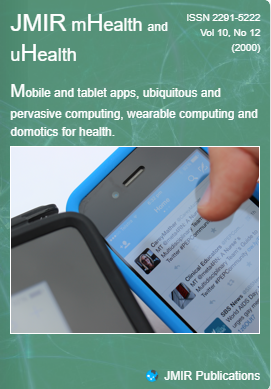Perception of Older Adults Toward Smartwatch Technology for Assessing Pain and Related Patient-Reported Outcomes: Pilot Study
Background: Chronic pain, including arthritis, affects about 100 million adults in the United States. Complexity and diversity of the pain experience across time and people and its fluctuations across and within days show the need for valid pain reports that do not rely on patient’s long-term recall capability. Smartwatches can be used as digital ecological momentary assessment (EMA) tools for real-time collection of pain scores. Smartwatches are generally less expensive than smartphones, are highly portable, and have a simpler user interface, providing an excellent medium for continuous data collection and enabling a higher compliance rate.
Objective: The aim of this study was to explore the attitudes and perceptions of older adults towards design and technological aspects of a smartwatch framework for measuring patient report outcomes (PRO) as an EMA tool.
Methods: A focus group session was conducted to explore the perception of participants towards smartwatch technology and its utility for PRO assessment. Participants included older adults (age 65+), with unilateral or bilateral symptomatic knee osteoarthritis. A preliminary user interface with server communication capability was developed and deployed on 10 Samsung Gear S3 smartwatches and provided to the users during the focus group. Pain was designated as the main PRO, while fatigue, mood, and sleep quality were included as auxiliary PROs. Pre-planned topics included participants’ attitude towards the smartwatch technology, usability of the custom-designed app interface, and suitability of the smartwatch technology for PRO assessment. Discussions were transcribed, and content analysis with theme characterization was performed to identify and code the major themes.
Results: We recruited 19 participants (age 65+) who consented to take part in the focus group study. The overall attitude of the participants toward the smartwatch technology was positive. They showed interest in the direct phone-call capability, availability of extra apps such as the weather apps and sensors for tracking health and wellness such as accelerometer and heart rate sensor. Nearly three-quarters of participants showed willingness to participate in a one-year study to wear the watch daily. Concerns were raised regarding usability, including accessibility (larger icons), notification customization, and intuitive interface design (unambiguous icons and assessment scales). Participants expressed interest in using smartwatch technology for PRO assessment and the availability of methods for sharing data with health care providers.
Conclusions: All participants had overall positive views of the smartwatch technology for measuring PROs to facilitate patient-provider communications and to provide more targeted treatments and interventions in the future. Usability concerns were the major issues that will require special consideration in future smartwatch PRO user interface designs, especially accessibility issues, notification design, and use of intuitive assessment scales.

